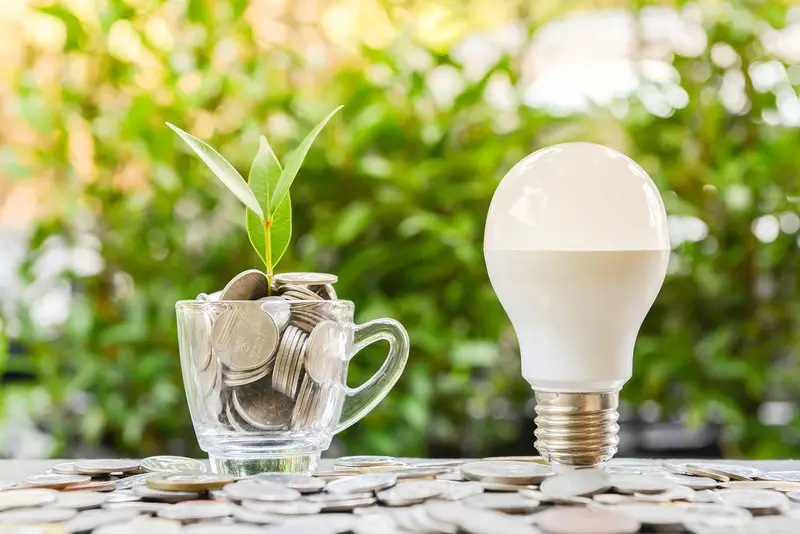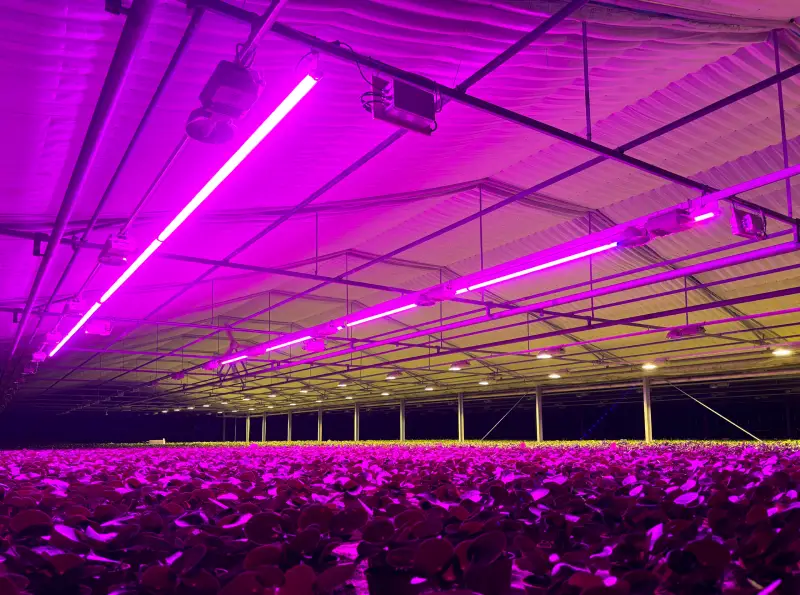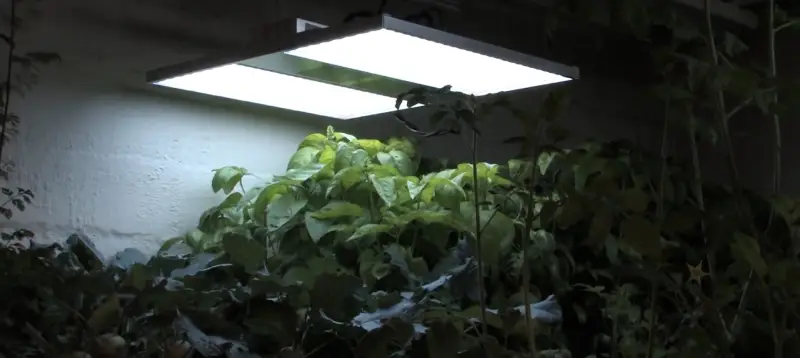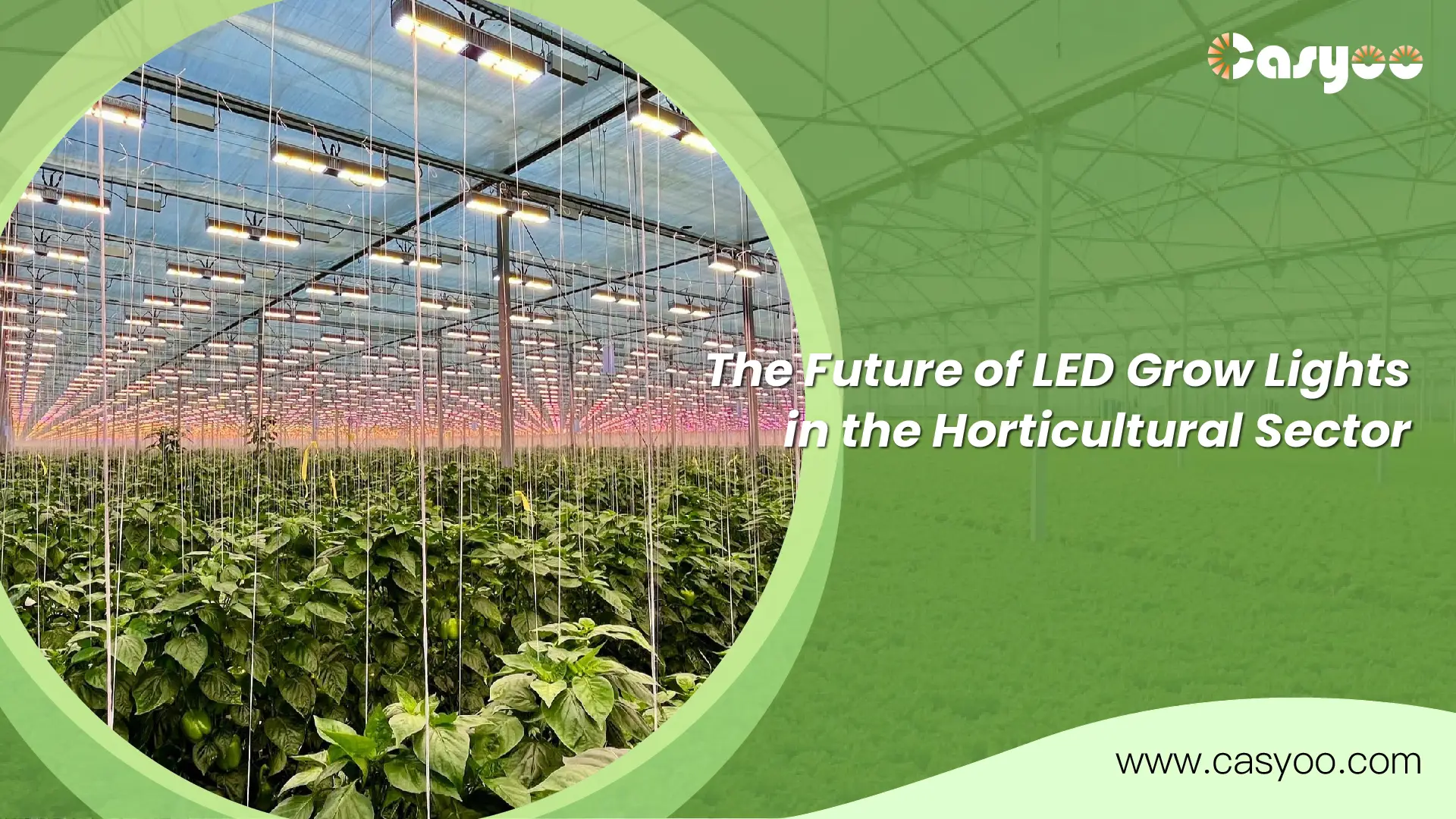For years, growers have faced many problems: the grow lighting is large and bulky, needs a lot of electricity to run, and also cooling. All of these mean huge energy costs, less space to grow, and equipment like air conditioning.
While LED grow lights didn’t solve all of these problems right away, their introduction into the horticultural sector industry did start to change things. The earliest growers who introduced LED grow lights noticed lower electricity costs and lower temperatures in their grow rooms, which certainly suggested that LED grow lights could be a great alternative to traditional grow lights. But there’s still a long way to go. Let’s look at the future of LED grow lights together!
A Brief History of LED Grow Lights

First patented in 1961, light-emitting diodes were very expensive, and the earliest LEDs only emitted red light, so LEDs weren’t widely used at first. In the 1970s, the easy production of semiconductor chips for LEDs greatly reduced their cost.
By the early 2000s, scientists had designed LEDs that were able to produce a visible light spectrum by converting blue LEDs through a phosphor mixture. With the appearance of visible spectrum LEDs, their applications became widespread and LEDs began to be used in electronics. By the end of 2000, LEDs began to replace incandescent and fluorescent bulbs for residence and office lighting. It was during this period that growers began to take notice of LED lighting.
Using LEDs to encourage plant growth is not a new idea; in fact, NASA has been experimenting with using LED lights to grow vegetables in deep space since the 1980s. These experiments showed that LED lighting works for growing vegetables in places lacking natural sunlight, but also demonstrated the limitations of LED technology at the time. Since only red and blue LEDs were tested initially, the test specimens were either stunted or became leggy, indicating that the plants needed a wider spectrum. Initially, fluorescent lights were used to supplement the visible light spectrum, especially the green light that early LED grow lights lacked, but LED technology eventually caught up. With the further advance of wider spectrum phosphors and multi-color LEDs, LED grow lights are able to produce a broader spectrum.
Why use LED grow lights?
Before looking at the bright future of LED grow lights, let’s discuss the advantages of LED grow lights over other traditional lighting.
Spectrum
LEDs have brought about a huge technological change, allowing growers to choose the desired spectrum based on the needs of the plants. Red light can be used for flowering, while the blue spectrum promotes plant growth. LED grow lights also have full-spectrum white light, so you don’t have to switch spectra to grow thriving crops.
Space Saving
Unlike traditional lighting, LED lights are compact and can fit into small spaces. Especially with the rise of vertical farms, you can grow more crops in the same space.
Year-round Planting
With LED grow lights, planting can be unconstrained by any weather. This means you can grow more without having to wait for another season or another rain. Researchers claim that this may be one of the most effective solutions to the world’s growing demand for food.
Higher Yield
Under normal circumstances, as long as there is electricity, there is nothing that can stop grow lights from working and plants from growing. This ensures a stable yield and greater predictability.
Lower heat output
LED grow lights do not emit that much heat. Therefore, you do not need a complex cooling system to start growing indoors.
Environmentally friendly
LED fixtures have a long service life, so there is no need to replace the bulbs regularly. However once the lamps reach the limit of use, they can be safely discarded because they do not contain toxic mercury.
Global trends in LED grow lights

In general, the future of LED grow lights around the world is as follows:
- Technological advancement: LED chip technology is still evolving, and metrics like lifespan and reliability are getting better all the time.
- Intelligentize: Artificial intelligence and the Internet of Things are two technologies that LED grow lights integrate to create intelligent control and management.
- Expansion of application areas: The application areas of LED grow lights are constantly expanding, from indoor planting, vertical farming, and speed breeding, to algae cultivation and other fields.
Let’s take a look at the development trends of LED grow lights in various countries!
China
Policy backing: The Chinese government has implemented several measures to encourage the growth of the LED grow light business and places a high value on innovations in agricultural science and technology.
Market volume: The market for LED grow lights in China is expanding quickly and is predicted to continue doing so for the foreseeable future.
Innovation in technology: Chinese LED grow light manufacturers consistently introduce new goods and services and actively research and develop cutting-edge technology.
United States
Technology leadership: The United States’ LED grow light technology is at the world’s leading level, with many well-known companies.
Mature market: The US LED grow light market is mature and widely used.
Ideal regulations: LED grow light products are subject to stringent laws and requirements in the United States.
Europe
Strong environmental awareness: Environmentally friendly products are in high demand among European customers, and there is enormous potential in the LED grow light sector.
Research and development in technology: European LED grow light manufacturers focus on technology research and development and have achieved leading results in spectrum regulation and intelligent control.
Policy backing: Governments across Europe have put policies in place to encourage the growth of the LED grow light sector.
Japan
Developed agriculture: Japan has developed agricultural technology, and there is a great demand for LED grow lights.
Technology innovation: Japanese LED plant light manufacturers focus on leading results in technology innovation, energy saving, and high efficiency.
Market competition: The Japanese LED plant light market is highly competitive and the price is relatively low.
The LED plant light industry has broad development prospects and will show a trend of technological progress, intelligence, and application expansion in the future. The development of the LED plant light industry in different countries and regions has its own characteristics, and will also show a differentiated development trend in the future.
The main driving factors for the growth of the LED grow light industry

Giants join in, fierce competition
Giants from both domestic and international markets, including Sanan, Mitsubishi Chemical, BOE, and Panasonic, have entered the fiercely competitive LED grow lighting sector. As a global leader in lighting, Osram has strengthened its position as the market leader in the plant light sector by acquiring Fluence, a major player in the industry. Simultaneously, import and export trade is growing, and multinational corporations are looking for ways to collaborate more and more.
Broad use
The need for horticulture lighting is rising due to the effects of urbanization and climate change on traditional agriculture, and the range of applications for LED plant lighting will only expand. Crops can be grown on the top floor of buildings, vertical farms, greenhouses, homes, and even abandoned containers.
Increase in plant factories
From the standpoint of agricultural development, the use of fertilizers and pesticides allows contemporary agriculture to quickly boost productivity in order to meet the enormous demand for food created by the growing population. Traditional agriculture, however, is limited by the seasons and environment, making it impossible to achieve full-planned yields. The appearance of plant factories solve this problem.
As the manufacturing sector of the electronics industry gradually shifts overseas, a large number of workshops used to produce precision devices such as chips are idle. These factories only need a little modification to become plant factories. The high degree of automation of plant factories can produce fresh scientific and technological agriculture all year round, and the advantages of not polluting the environment naturally attract the love of growers.
Global legalization of marijuana
A growing number of states in the US are starting to allow marijuana use. The U.S. House of Representatives approved a bill on April 19, 2021, permitting banks to offer services to marijuana businesses in jurisdictions where the drug is permitted. Data from the National State Legislative Conference of the United States indicates that 17 states currently permit adult use of marijuana, while 36 states have allowed it for medical purposes. Although the initial cost of LED plant lights is high, the investment can be recovered within one year, and LED lamps can be used for 5 to 10 years. There is a vast market demand for vertical agricultural system solutions for various high-value-added cash crops, especially medical cannabis plants, and it has become an important application scenario for downstream demand for plant lighting.
About Us
Casyoo carefully considers the spectrum ratio from red-blue to far-red-green in its advanced horticultural LED lighting and makes full-spectrum lights that are truly designed for plant spectrum, combining far-red and ultraviolet diodes as needed to provide high-quality lighting for plants. Contact us today to make your crops thrive.




